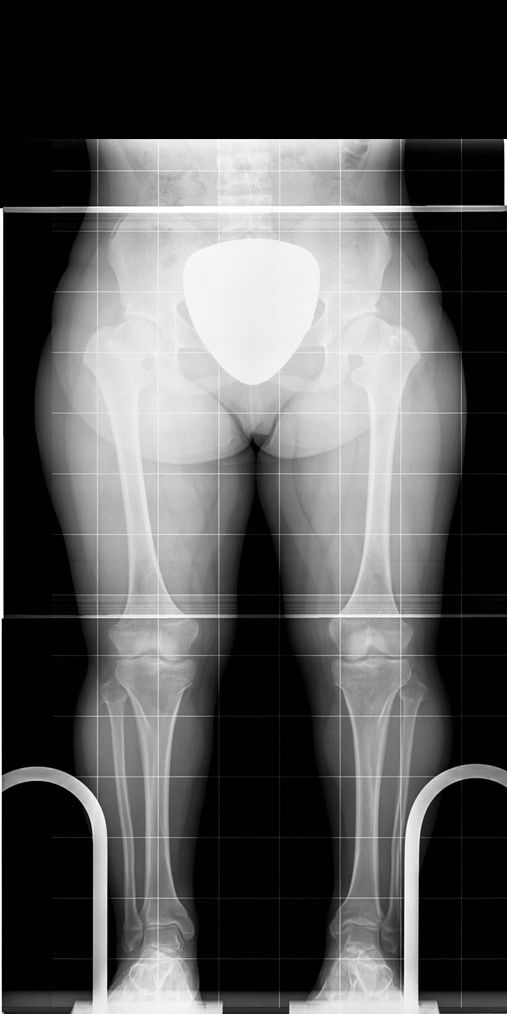
Leg Lengthening for Short Stature
Just as leg lengthening can be advantageously carried out on one side with fully implantable distraction nails, it is also possible to lengthen both legs in principle. However, there is an important distinction to be made:
In patients who are smaller than others for family reasons or who merely feel too small, bilateral leg lengthening is considered cosmetic (see cosmetic leg lengthening).
In cases of short stature due to a genetic or endocrinological cause, such as achondroplasia or growth hormone deficiency, there is a medical indication for bilateral leg lengthening, especially if the initial height after completion of length growth is only between 120 and 140 cm. These people are severely restricted or even significantly handicapped in many ordinary activities of daily life due to their short stature, so that a bilateral leg lengthening brings a significant gain in quality of life with every centimetre of additional height.

Short stature patient with achondroplasia
A leg lengthening sets the course for a lifetime
The decision to have bilateral, surgical leg lengthening should always be made by the affected person and not just by the parents. A detailed consultation at ZEM-Germany helps to critically weigh the advantages and disadvantages. The person concerned does not necessarily have to be of legal age. However, in order to be able to make a decision together with the parents, a certain maturity is an important prerequisite, because it is important to set the course for the whole life.

Before the treatment

Simultaneous upper (femur) and lower leg (tibia) lengthening

After completion of the treatment
Modern implants and a gentle surgical technique
To achieve an increase of 15 cm and more, lengthening of both upper (femur) and lower (tibia) legs is necessary. Bow-legs or knock-knees can corrected simultaneously. What used to be possible only with external fixators can now be corrected much more gently and advantageously with fully implantable distraction nails.
In addition to the important functional aspects, body proportions must also be taken into account for the overall appearance. Holistic concepts, the use of modern implants, a gentle surgical technique and the logistics of a specialized center are thus required to meet the specific needs of those affected. It is obvious that these prerequisites are rarely found in broad-based clinics. In the case of disease-related dwarfism and resulting disability, treatment costs are usually covered by both private and public health insurers. Which options are available and which procedure is best in each individual case should be clarified in a personal consultation at ZEM-Germany.

After completion of the treatment
Contact
Privacy Policy